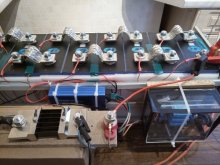You guys are going to drive the battery manufacturers crazy, next thing you know you won't even believe how long your cell phone or laptop battery will last.I think you would find that the resellers will quickly say the cells are A- or some such. Logically if a cell met all specs it would not be sold as grey market - there is an almost unlimited demand so why wouldn't EVE sell themselves? Even the resellers are selling them as fast as they can get them in the door by the truckload so they are not going to change their approach unless it increases their profit margins.
I've purchased enough times from that part of the world to suspect how things would go. Westerners are preconditioned to believe marketing but those with some experience tend to consider price as a direct measure of quality. You are not going to get a Tesla Powerwall for 25% of the price.
This is all pretty academic based upon people's perception of if they are being marketed to or lied to. Most consumers would not even bother to test the capacity of a low cost battery purchased and installed in a vehicle etc. as Will is doing. -0.6% on spec is just not relevant. Ever buy a 2.0 liter car and discover it is in fact only 1.96l? Or that the fuel consumption and pollution figures only apply if it is hooked up to a test stand
I don't have any of the Lishen cells, but it seems that their 272AH and the Eve 280AH cells are almost identical in everything except rating. Seems Lishen is more honest in their ratings.
I had always planned on using only 80% of the capacity, so as long as I can get 224AH out of a pack "between the knees", I'll be satisfied that I got good value. Your mileage may vary, and you have every right to expect 280AH out of a cell advertised as 280AH. I suspect that battery manufacturers are not used to having to exaggerate claims, they have relied on cell phone and laptop manufacturers to do it for them.



